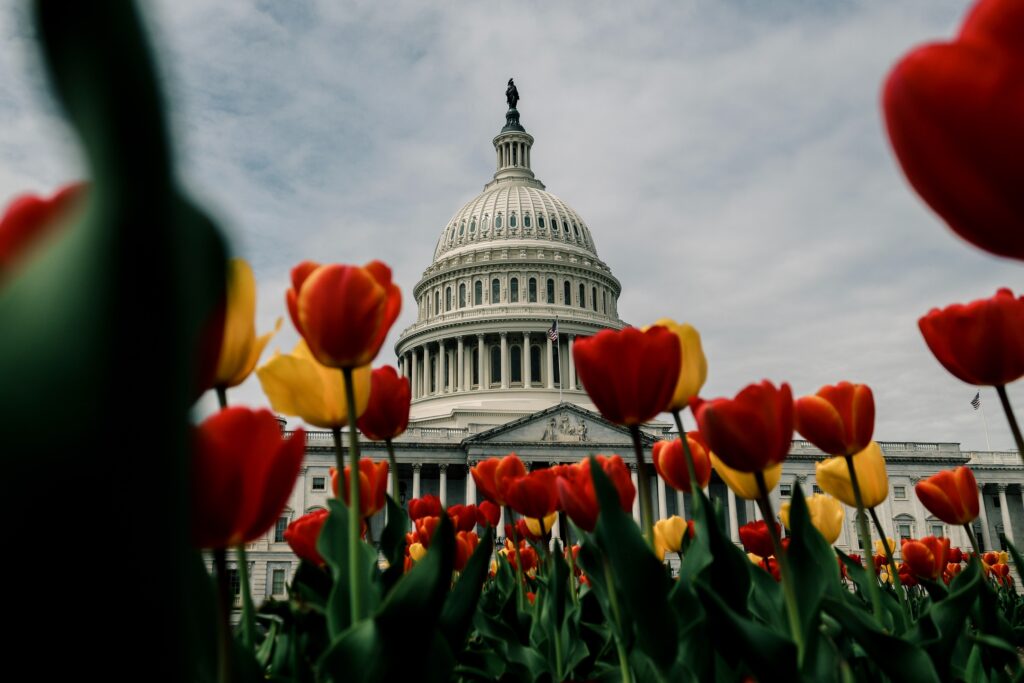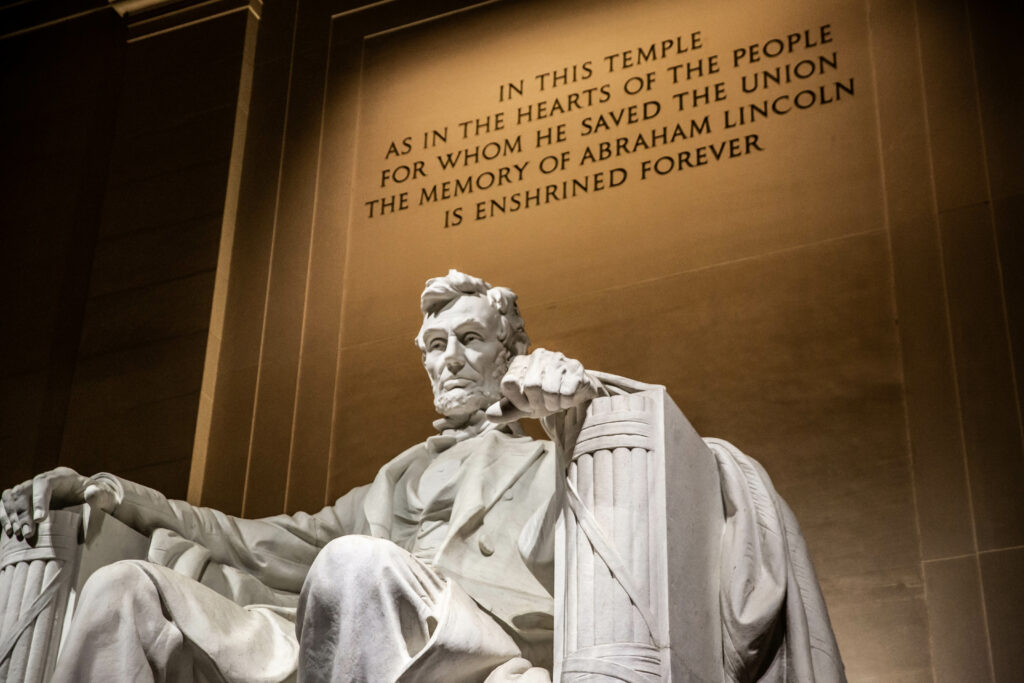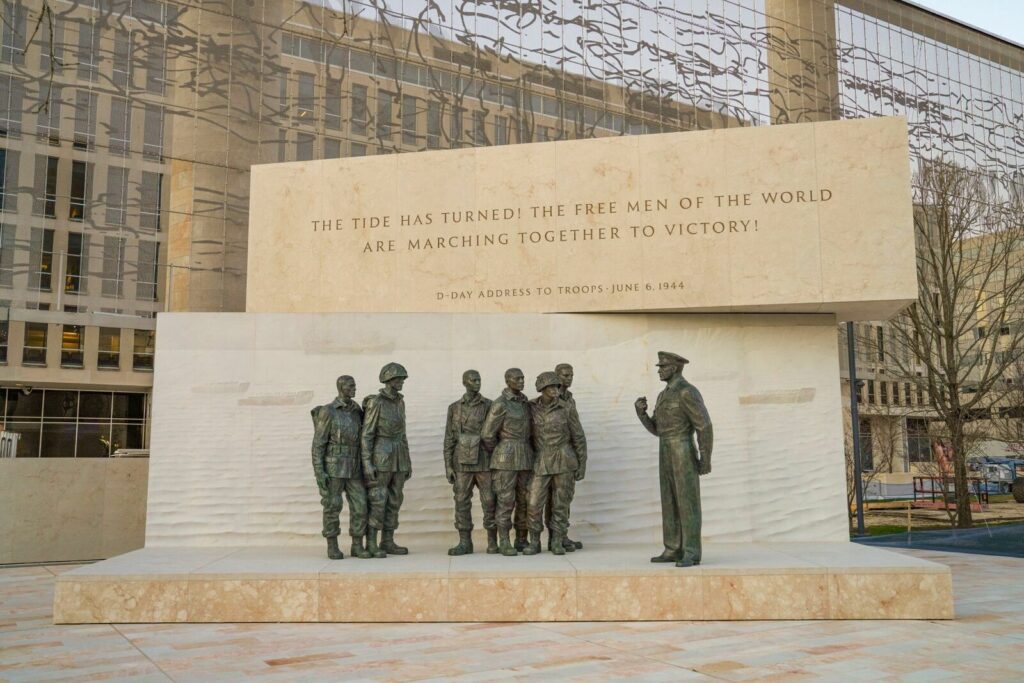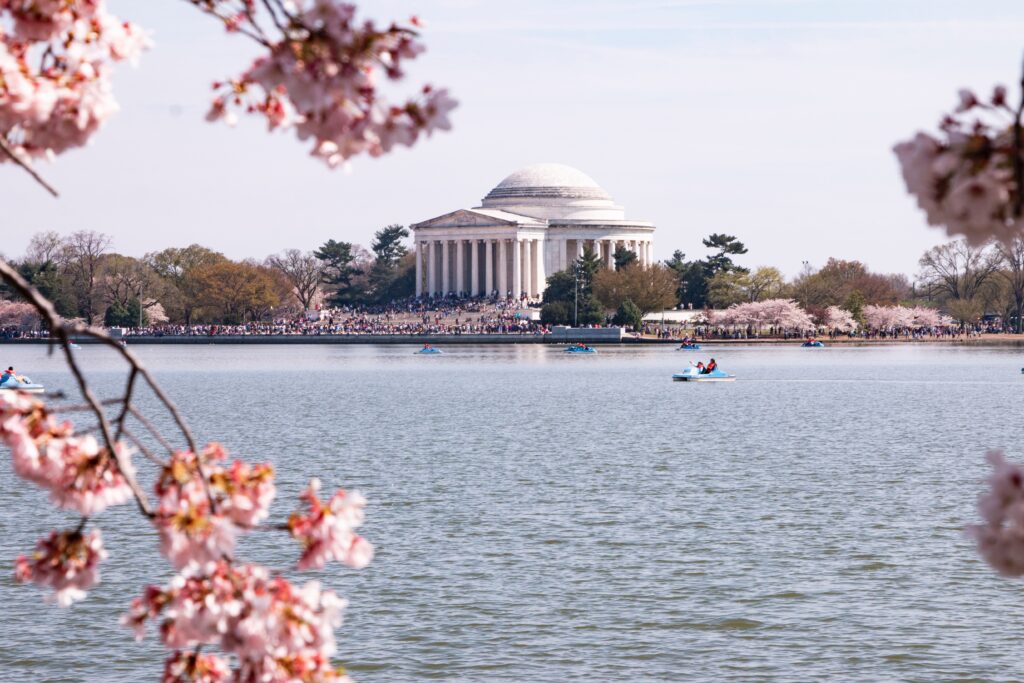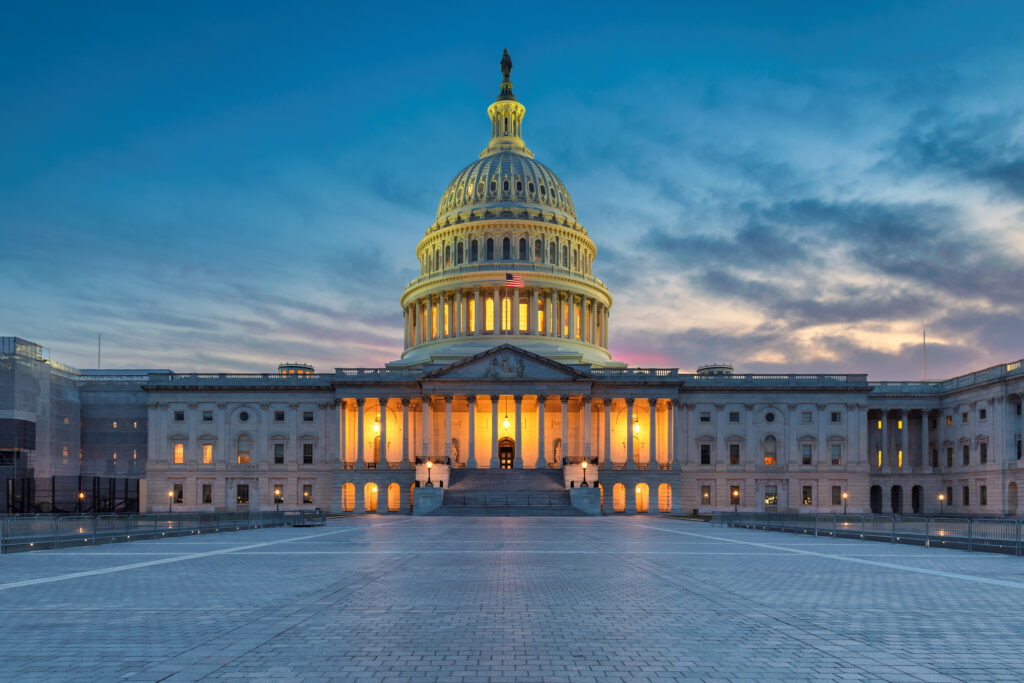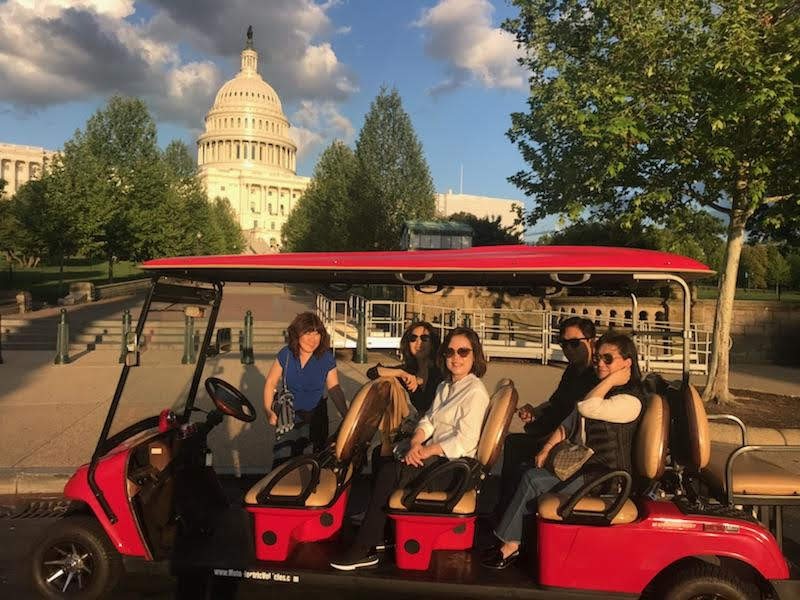The weather right now is perfect to be outdoors in the nation’s capital and exploring the National Mall. Springtime in Washington D.C. is a truly magical experience. As the cherry blossoms begin to bloom and the weather warms up, there’s no better time to explore the city’s many monuments and memorials. From paying your respects at the Vietnam Veterans Memorial to taking in the stunning views from the Lincoln Memorial, D.C.’s iconic landmarks are a must-see for any visitor. But with so many sites to explore, it can be difficult to know where to start. In this blog post, we’ll take you on a tour of the city’s most famous monuments and memorials in and around the National Mall, giving you all the information you need to plan the perfect springtime adventure in our nation’s capital. If you’re wondering how to spend the Spring in DC, here is a comprehensive guide on the monuments and memorials you definitely should check out.
DC’s Monuments and Memorials to Visit This Spring
The National Mall
The Mall in Washington, D.C. is often referred to as “America’s Front Yard.” It spans two miles from the Capital Building to the Lincoln Memorial, and from the White House to the Jefferson Memorial. People from all over the world come to this space to celebrate America’s rich history, mourn, protest, and pay their respects. The idea of a green space in the heart of the city was conceived by Pierre L’Enfant in 1791, and the McMillan Commission in the early 20th century selected the location for the Lincoln and Jefferson Memorials to surround the Mall with monuments to America’s great leaders, in keeping with L’Enfant’s vision of a have monument center in the heart of the city. The National Mall is the perfect place to go when the weather is warm to enjoy a picnic on the grass or to tour the monuments.
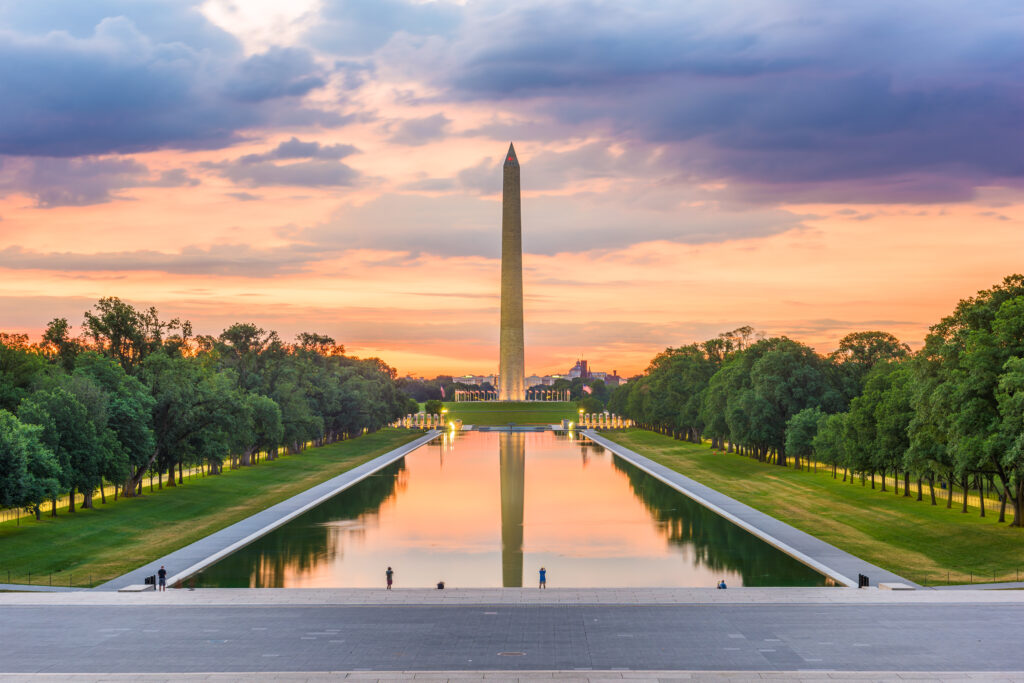
Reflecting Pool
Located on the National Mall in Washington, D.C., the Lincoln Memorial Reflecting Pool is the largest of its kind in the city. Positioned directly east of the Lincoln Memorial, the rectangular pool stretches for approximately 2,030 feet and is 167 feet wide. Lined by walkways and trees, the pool draws in millions of visitors each year who come to view the iconic landmarks nearby and take in the stunning reflections of the Washington Monument, the Lincoln Memorial, the trees, and the sky. Designed by Henry Bacon and constructed in 1922 and 1923, the pool holds approximately 6,750,000 U.S. gallons of water and has a depth of approximately 18 inches on the sides and 30 inches in the center. It is a beautiful spot to walk along and perfect for photo opportunities.
Lincoln Memorial
The Lincoln Memorial honors the sixteenth president of the United States Abraham Lincoln who guided the country through the Civil War and contributed to the freedom of over four million enslaved people. The exterior of the memorial is inspired by Greek architecture with 87 steps extending from the edge of the reflecting pool to the main chamber. This grand memorial is where the “I Have A Dream Speech” occurred, where Marian Anderson performed, as well as the location for many other historical moments. Inside of the memorial chamber sits a striking statue of Abraham Lincoln with inscriptions from Lincoln’s Second Inaugural Address and Gettysburg Address surrounding him on the north and south walls. Words and pictures do not do this memorial justice, and it is definitely a sight to behold in person.
The Tidal Basin
You don’t want to miss the blooming of the cherry blossoms this year! The Tidal Basin is the location of the well-known Cherry Blossom Festival each year. Additionally, along the National Mall Tidal Basin is a collection of national monuments, including the Jefferson Memorial, Franklin Delano Roosevelt Memorial, and Martin Luther King, Jr. Memorial. The basin is famous for the National Cherry Blossom Festival, which attracts 1.5 million visitors annually to see the cherry trees in full bloom. The need for the Tidal Basin arose in 1881 after a devastating flood that damaged many parts of the city, including the National Mall. The Army Corps of Engineers filled in the tidal wetlands and installed gates to form a pond, which uses a pumping system to keep the reflecting pool at the Lincoln Memorial full of water. In 2019, the Tidal Basin was named a “National Treasure” by the National Trust for Historic Preservation due to its national significance and need for preservation.
Korean War Veterans Memorial
The Korean War Veterans Memorial in West Potomac Park was built to honor the people and entities that contributed to South Korea’s freedom in the 1950s. President Reagan appointed the Korean War Veterans Memorial Advisory Board in 1988 to select the location, and the designer, Cooper-Lecky, broke ground in 1995. The memorial includes a 2.2-acre site that points towards the Pool of Remembrance, which honors the 54,269 American casualties of the conflict. At the opposite end, 19 soldiers sculpted by Frank Gaylord emerge from the trees and walk among juniper bushes and granite strips, representing the terrain they faced. Additionally, the memorial includes a 164-foot-long mural made of polished black granite, etched with 2,500 photographic images of the support staff, and the UN wall commemorates all the countries involved in the South Korean independence effort. Visit the memorial to honor those who fought in what is often dubbed “The Forgotten War”.
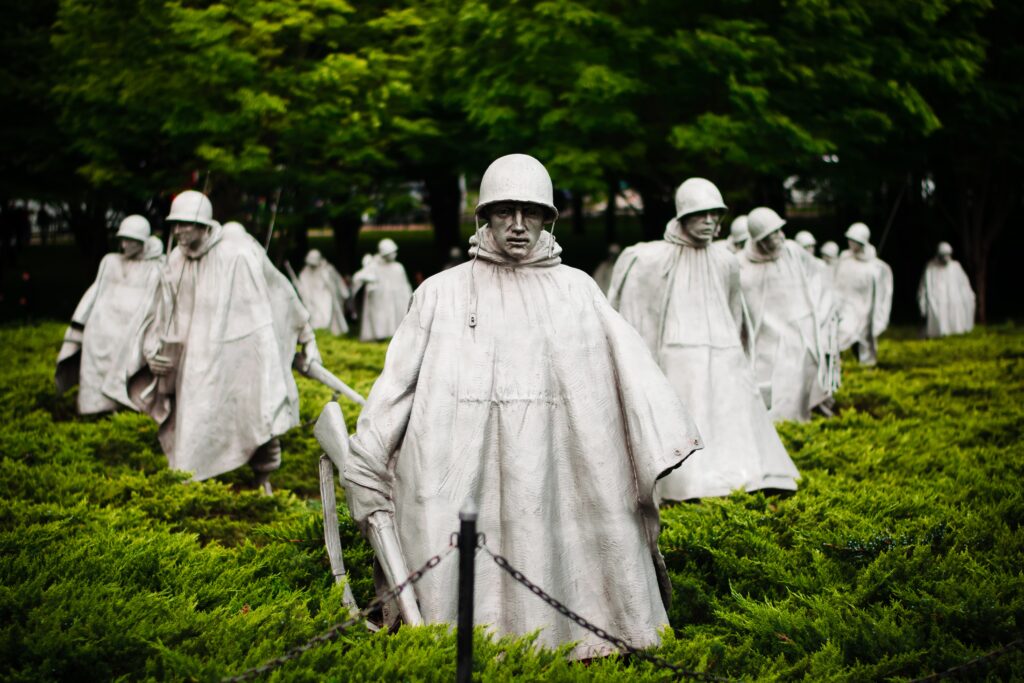
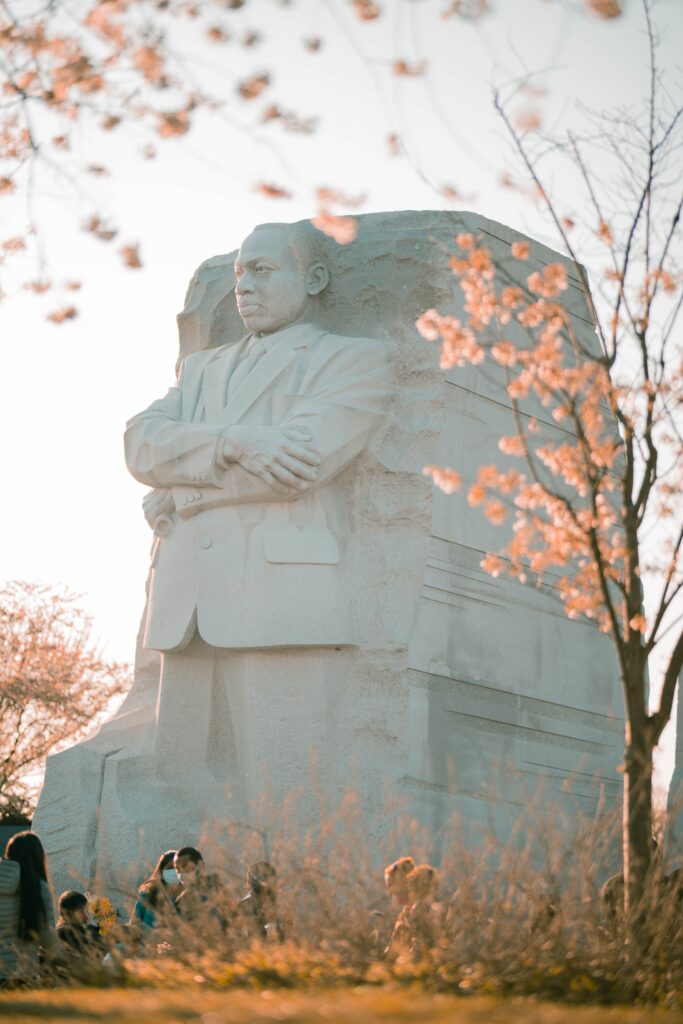
Martin Luther King, Jr. Memorial
Located in downtown DC along the Tidal Basin, the Martin Luther King, Jr. Memorial stands at 30 feet tall on Independence Ave SW near the Lincoln Memorial and Washington Monument. The design of the memorial is a grand statue of Martin Luther King, Jr. carved beautifully into stone to depict his image emerging from a mountainside. The inspiration for the design of the statue comes from the quotation “Out of the mountain of despair, a stone of hope” from Martin Luther King, Jr.’s “I Have A Dream” speech in Washington, DC in 1968. The stone with the statue carving is depicted as a slice pulled from a mountain, symbolizing the stone of hope from the mountain of despair. There are incredible details like scrape marks on the edges to symbolize the struggle to create change as well as an engraving with this quotation. Martin Luther King, Jr. was an extremely influential figure in American history who made great strides for the civil rights movement and granting more rights to African Americans.
World War II Memorial
The World War II Memorial was approved by President Clinton in 1993 to commemorate the sacrifice of veterans of the war. It was designed by Friedrich St. Florian and construction began in 2001. The memorial is divided into two sides, representing the Atlantic and Pacific theaters, and is surrounded by pillars with the names of US states and territories involved in the war. The east-facing wall of the memorial, known as the Freedom Wall, has 4,048 gold stars to honor the lives of 400,000 Americans who gave their lives in some aspect of WWII. This memorial attracts millions of visitors each year.
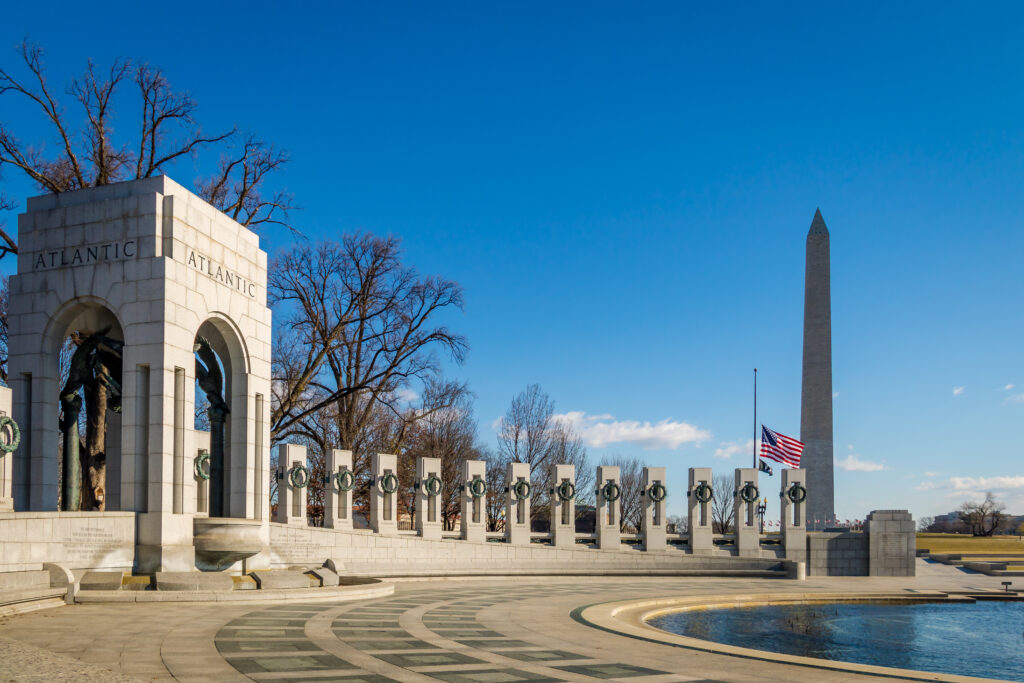
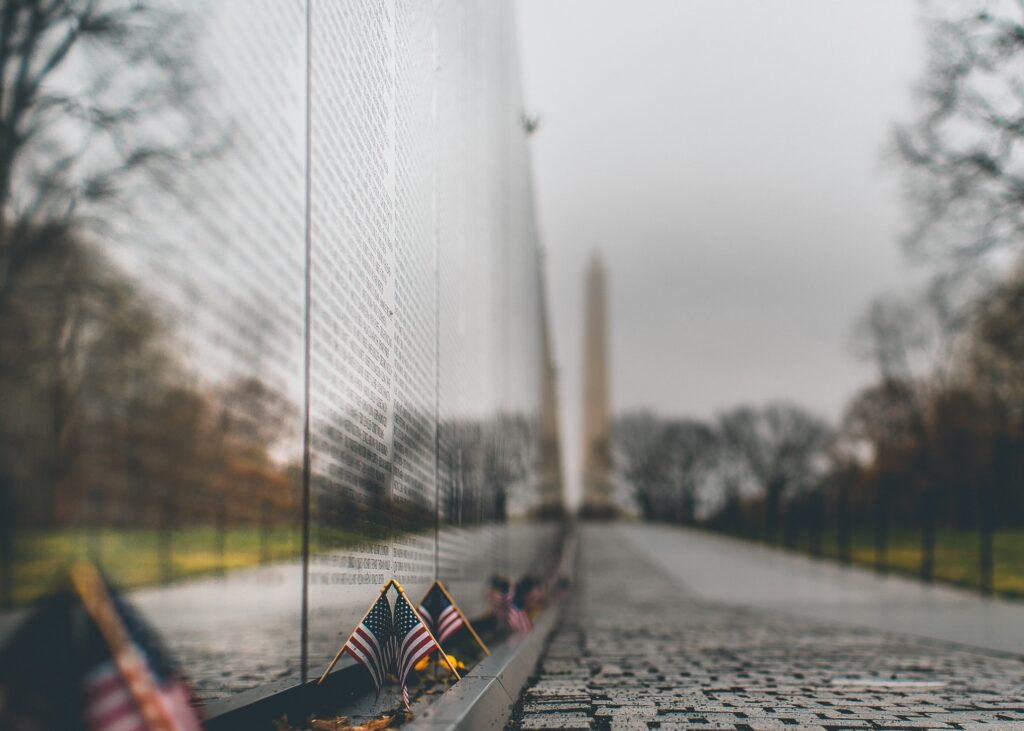
Vietnam Veterans Memorial
A group of Vietnam veterans established the Vietnam Veterans Memorial Fund, Inc. on April 27, 1979. The group sought to create a memorial to honor those who lost their lives in the Vietnam War. After President Carter signed legislation authorizing a site for the memorial in Constitution Gardens, a design competition was held with specific criteria: the winning entry had to be reflective and contemplative, harmonious with the surroundings, and devoid of political statements. Maya Lin, a Yale undergraduate, won the competition with her untraditional design consisting of two 246-foot walls of polished black granite etched with the 58,261 names of the missing or dead. The memorial was dedicated on November 13, 1982, and while initially controversial, has become one of the most emotional locations on the National Mall. Visitors often leave mementos at the memorial, and some are displayed in the Smithsonian Institution’s American History Museum.
Vietnam Women’s Memorial
The Vietnam Women’s Memorial, located in Washington D.C., is a poignant and powerful tribute to women who served in the Vietnam War. The centerpiece of the memorial is a stunning bronze statue depicting three women: a nurse tending to a wounded soldier, a standing woman looking up in concern, and a kneeling woman holding a letter from home. The names of women who died in Vietnam are included on the list of over 58,000 names on the Vietnam Veterans Memorial. The Vietnam Women’s Memorial serves as a powerful reminder of the sacrifices made by women during the Vietnam War and honors their bravery and dedication in the face of unimaginable challenges.
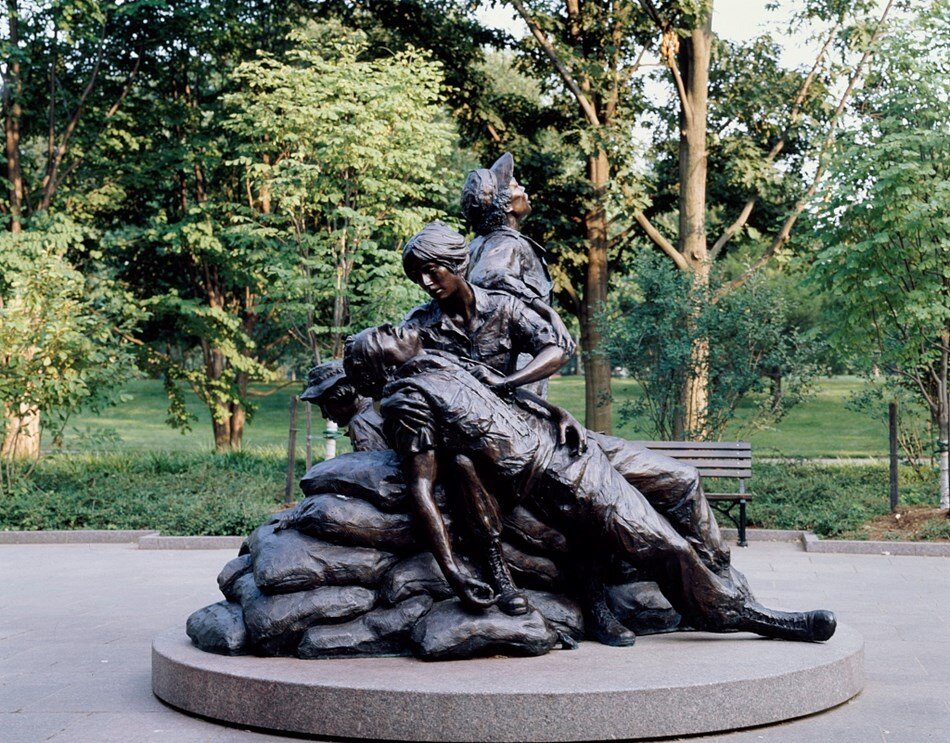
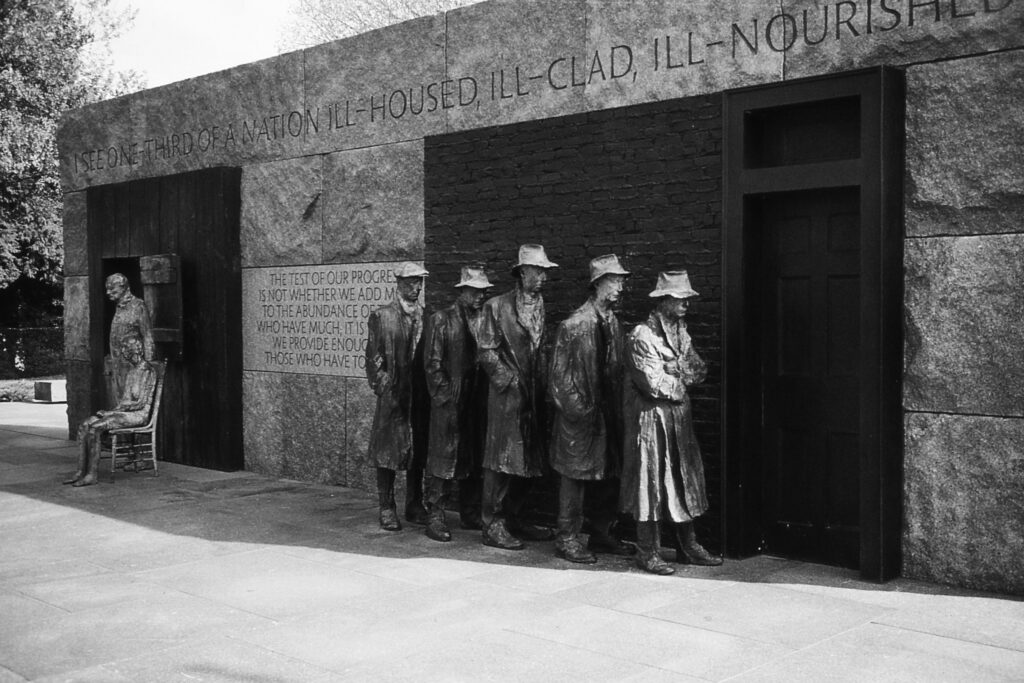
Franklin D. Roosevelt Memorial
The Franklin Delano Roosevelt Memorial is located in West Potomac Park between the Lincoln and Jefferson Memorial. This memorial honors the 32nd president of the United States and First Lady Eleanor Roosevelt who were in office during the depth of the Great Depression and World War II and contributed to restoring faith to Americans. The memorial is a magnificent site that you walk through to discover more bits of history. The memorial includes sculptures, tactile elements, and granite engravings of twenty two quotes from Roosevelt’s presidency from times of the Great Depression, the New Deal, and the Second World War.
Washington Monument
The Washington Monument is an over 555 foot tall building built to commemorate the commander-in-chief of the Continental Army outlasting British armies during the Revolutionary War and the first President of the United States George Washington. It is the tallest stone structure in the world and is made from marble, bluestone gneiss, and granite. The monument standing in the center of the nation’s capital is often compared to President Washington as standing tall and being in no one else’s shadow. This monument is quite the magnificent site from the ground, and visitors can also get tickets in advance to ride the elevator to get to the top. Learn about how to visit and get your tickets to get to the 500 foot observation deck here.
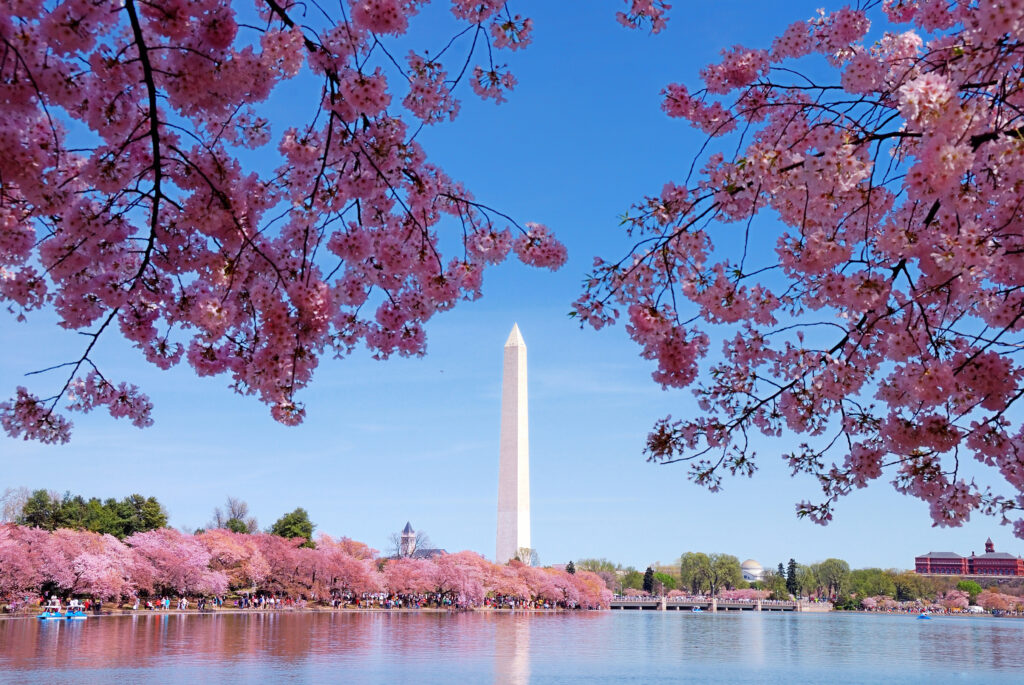
Dwight D. Eisenhower Memorial
The newly dedicated Dwight D. Eisenhower Memorial was designed by Frank Gehry and opened on September 17, 2020. The memorial commemorates the achievements of Eisenhower as the 34th President of the United States and the Supreme Commander of the Allied Expeditionary Force in World War II. Visitors are welcomed by a life-sized statue of a young Eisenhower at the western entrance, while the contemplative core of the memorial features heroic-sized bronze statues of Eisenhower as President and General. The most striking element of the memorial is the 450-foot tapestry made of woven stainless steel that features a line sketch of Pointe du Hoc, a Normandy landmark that pays tribute to the sacrifice made by the world in liberating Europe during WWII. The tapestry backdrop also symbolizes Eisenhower’s commitment to world peace. The memorial honors Eisenhower’s humble beginnings in Abiline, Kansas, and his profound accomplishments as a military leader and President.
Jefferson Memorial
The Thomas Jefferson Memorial, built to commemorate the third President of the United States, is a grand circular structure located in Washington D.C. The commission to build the memorial was established on his 200th birthday, April 13, 1934. As it is located along the Tidal Basin, the memorial is famous not only for its design and the words of Jefferson displayed inside, but also for the cherry blossom trees surrounding it that were given to the United States by Tokyo in 1912. The building that hosts a bronze statue of Thomas Jefferson within it is a circular, open-air structure featuring a shallow dome that is supported by twenty six columns. The statue of Jefferson shows him holding the Declaration of Independence, and there are also quotations from Jefferson’s writings engraved in the walls.
The U.S. Capitol Building
The United States Capitol is an important symbol of American government and democracy, as well as the workplace for the country’s legislature, the U.S. Congress. It serves not only as a functioning office building, but also as a destination for tourists from around the world. Construction of the Capitol began in 1793, and Congress moved in to the newly completed north wing in 1800. This architecturally impressive building was expanded several times throughout history, including after the War of 1812 and in the 1850s to accommodate more representatives and senators, with the U.S. Capitol Visitor Center completed in 2008. We recommend visiting the Capitol building while the sun is setting or after sundown to admire the architecture against the beautiful sky and see the impressive building lit up once it gets dark.
See all of the landmarks at once on a Golf Cart Tour
Looking to take the pressure off of planning your trip? With so many sites to see, planning which monuments and memorials to visit can become overwhelming. Thus, we invite you to take one of our golf cart tours around the National Mall to see all of these iconic monuments and memorials in the nation’s capitol. If you’re looking for a fun and educational way to explore the city’s iconic and historical sites and learn more about the history of the country, check out one of our narrated golf cart tours.
These tours are a fun and stress-free way to visit all of the popular sites in DC without needing to create a plan or research on your own. Capitol Express Tours is a local business that will take you to see the iconic monuments and memorials within the city on our narrated tour down Pennsylvania Avenue from the White House to the Capitol and through the heart of the National Mall where you can see various monumental landmarks and memorials like the Washington Monument, the Lincoln Memorial, and the US Capitol Building. Our tours allow you to explore and learn about sites that depict the interesting details of the nation’s capital with opportunities to customize your tour as well. Book your tour now!
